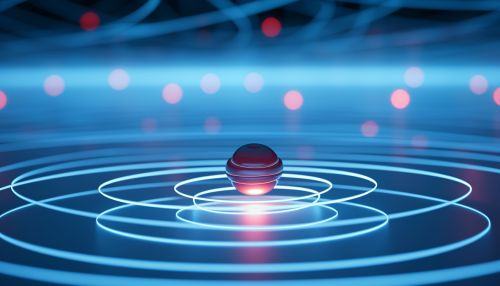Zero-Point Energy
Introduction
Zero-point energy (ZPE) is the lowest possible energy that a quantum mechanical physical system may possess. Unlike in classical mechanics, quantum systems constantly fluctuate in their lowest energy state due to the Heisenberg uncertainty principle. As well as atoms and molecules, the empty space of the universe has these properties.


Quantum Mechanics and Zero-Point Energy
In quantum mechanics, zero-point energy is the energy associated with the ground state of the system. The term "ground state" refers to the lowest allowed energy state of an atom or a molecule, which is typically a state of zero kinetic energy where all particles are at rest. However, due to the Heisenberg uncertainty principle, particles can never be completely at rest, and thus all systems have a minimum amount of kinetic energy, the zero-point energy.
The concept of zero-point energy was developed in Germany by Einstein and Otto Stern in 1913, using a formula developed by Max Planck in 1900. The phrase "zero-point" refers to the temperature of absolute zero at which these fluctuations theoretically persist.
Theoretical Implications
The existence of zero-point energy has numerous theoretical implications in the fields of physics and chemistry. For instance, it is a key component in the formulation of the quantum field theory, which describes the dynamics of particles in terms of fields. It also plays a crucial role in the stability of atoms and the properties of elementary particles.
In addition, zero-point energy is a critical factor in the Casimir effect, which describes the attraction between two uncharged plates due to quantum vacuum fluctuations. This effect has been experimentally verified and is a striking demonstration of the reality of zero-point energy.
Experimental Evidence
Experimental evidence for zero-point energy comes from the observation of phenomena such as the Lamb shift and the Casimir effect. The Lamb shift, observed in the hydrogen spectrum, can only be explained by considering the interaction of the atom with the zero-point fluctuations of the electromagnetic field. The Casimir effect, on the other hand, is a direct evidence of the existence of zero-point energy in the vacuum.
Zero-Point Energy and Quantum Vacuum
The quantum vacuum is not a state of absolute nothingness as one might assume from its name. Instead, it is a state of minimal energy where quantum fluctuations due to zero-point energy are still present. These fluctuations give rise to a constant background energy that exists everywhere in the universe, known as the vacuum energy.
The concept of vacuum energy has been used in various fields of physics, including cosmology, where it is associated with the cosmological constant and the energy of the vacuum, which is thought to be responsible for the accelerated expansion of the universe.
Zero-Point Energy in Popular Culture
While zero-point energy is a scientific concept grounded in quantum mechanics, it has also been appropriated by various elements of popular culture. In science fiction, for instance, zero-point energy is often portrayed as a potentially limitless source of power that could be harnessed for advanced technology. However, these depictions are generally considered to be speculative and not based on established scientific principles.
